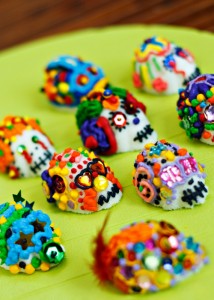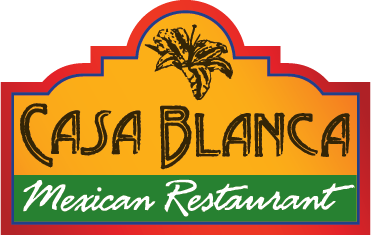Every part of the world has holidays that celebrate special moments in history.  Mexican culture celebrates holidays similarly to the United States; however, there are different customs. Holidays in Mexican culture have extreme symbolism and importance. Their holidays are routed in religion and past events that resemble the Mexican culture. The Mexican culture preserves the meaning of their holidays through celebrations and traditions, for example Day of the Dead. From what you wear to what you eat, it’s important in Mexican culture to celebrate holidays with festive gatherings.
Mexican culture celebrates holidays similarly to the United States; however, there are different customs. Holidays in Mexican culture have extreme symbolism and importance. Their holidays are routed in religion and past events that resemble the Mexican culture. The Mexican culture preserves the meaning of their holidays through celebrations and traditions, for example Day of the Dead. From what you wear to what you eat, it’s important in Mexican culture to celebrate holidays with festive gatherings.
Christmas is an example of a festive holiday in Mexican culture that is highly involved. Their celebrations are spread out over a period of two months, honoring pivotal moments with baby Jesus. In Mexican culture, children wake to find presents on January 6th, Three Kings Day, rather than December 25th. Christmas in Mexican culture reflects the “reason for the season” more than others. The article below from Aracnets.net shows all of the holidays celebrated in Mexican culture and what they represent to the Mexican people.
Mexican Holidays
DIA DE LOS MUERTOS /HANAL PIXAN/ HALLOWEEN
The Day of the Dead, is a celebration that represents the unity between life and death. It emphasizes death as part of the cycle of life and was borne from the merging of the Catholic feast of All Soul’s Day (a day to remember the dead with prayer) and with Indian rituals of death.
The celebration of Día de Muertos (Hanal Pixán in Mayan language) coincides with indigenous celebrations and the catholic celebrations of All Saints Day (Nov 1st) and All Souls Day (Nov 2nd ). On October 31st relatives clean and decorate the altars (at the Grave Site) in anticipation of the honoured guests: deceased family’s souls. This festivity mark a very special occasion when the living have an opportunity to show respect for their departed loved ones, whose spirits are expected to return to their homes.
Families also decorate an altar at the house. With the deceased’s photograph, favourite food, alcoholic beverage, cigarettes, chocolate and other goods. For deceased children, simple toys are included so the child’s spirit has fun while he/she visits the family.
LAS POSADAS
The beginning of the Christmas festivities is marked with Las Posadas, nine consecutive days of candlelight processions and lively parties starting December 16th.
Families gather to re-enact the holy family’s quest for lodging in Bethlehem. The procession is headed by a small plaster Virgin Mary and San José. They are followed by other children portraying angels, the Three kings and pastores (shepherds). The breaking of a piñata is a rigorous part of this celebration.
NOCHE BUENA
Noche Buena is the culmination of the Holiday festivities with the celebration of a midnight mass (Misa de Gallo). Afterwards, families head home for a traditional Christmas supper, which may feature regional dishes. Depending on the economic status of the family, the feast might include bacalao a la vizcaína (Biscayan cod) and romeritos (wild greens in mole sauce). Roast turkey, ham or suckling pig are other popular menu items. The evening is rounded out with the opening of gifts and for the children, piñatas and luces de Belén (sparklers). These happy family gatherings generally last until dusk and for this reason December 25th is set aside as a day to rest and enjoy leftovers.
LOS TRES REYES MAGOS/ THREE KINGS DAY
Epiphany, which is called Dia de los Reyes (Three Kings Day) portrays the arrival in Bethlehem of the Wise Men carrying gifts for the baby Jesus. Children all over Mexico, anxiously await waking up January 6th to find toys and gifts.
A special treat served on this day is the Rosca de Reyes (a crown-shaped sweet bread decorated with jewel-like candied fruits) Tiny plastic figures of babies are hidden in the dough before baking. There is much excitement as each partaker cuts his or her own slice, for whoever gets a piece containing a baby is obligated to host another party on or before Candlemas, February 2, when Mexico’s holiday season finally comes to an end.
SEMANA SANTA
Semana Santa is Mexico’s second most important holiday season of the year, behind only Christmas, and runs from Palm Sunday to Easter Sunday. In addition to attending Mass on Good Friday and Easter Sunday, many Mexicans will also take advantage of the holiday to go on vacation. If you’re planning to visit Mexico during Semana Santa, make sure you checked on availability in advance.
Semana Santa, or Holy Week, celebrates the Christian holiday of Easter. Mexico is nearly 90 percent Catholic, so this religious holiday takes on a special meaning that the entire community shares and participates in. Live representations of the Jesus Christ’s Crucifixion take place in many little towns. It is like a live play where people from the town assume the roles of Jesus, Virgin Mary, St. Peter, St. John and many other characters.
5 DE MAYO
The origination for Cinco De Mayo, The Fifth Of May, commemorates the defeat of the French army by the Mexicans at The Battle Of Puebla in 1862. It is primarily a regional holiday celebrated in the state capital city of Puebla and throughout the state of Puebla, but is also celebrated in other parts of the country and in U.S. Cities with a significant Mexican population.
The battle at Puebla in 1862 happened at a violent and chaotic time in Mexico’s history. Mexico had finally gained independence from Spain in 1810, and a number of internal political takeovers and wars, including the Mexican-American War and the Mexican Civil War of 1858, had completely wiped out the national economy. The victory of the battle at Puebla gave the people pride on their Country and the spirit of freedom.
CARNAVAL
Carnaval is an official Mexican holiday that kicks off a five-day celebration of the libido before the Catholic lent. Beginning the weekend before Lent, Carnaval is celebrated exuberantly with parades, floats, costumes, music and dancing in the streets.
The festival of Carnaval is celebrated as a last indulgence of carnal pleasures that Catholics must give up for 40 days of fasting during Lent, from Ash Wednesday to Easter Sunday. In fact, the word Carnaval is derived from Latin, meaning take away or goodbye to flesh, and strict Catholics will give up meat eating during Lent.
Carnaval is officially celebrated for 5 days, leading up to Ash Wednesday, with the most vigorous celebration taking place over the one weekend in Mexico. The wearing of masks during Carnaval is said to be a pagan practice as protection from evil spirits, but most likely evolved as a way to participate fully in the celebration with some anonymity.
DIA DE LA INDEPENDENCIA
Mexico’s Independence Day is celebrated on September 16. It commemorates the beginning of Mexico’s struggle for independence from Spain, which began on the 16th of September in 1810. Known as Dieciseis de Septiembre, it’s often confused by Americans with Cinco de Mayo (which celebrates the victory at the Battle of Puebla). In every town, small and large, el día de Independencia is celebrated with “El Grito de Independencia” (Independence shout) in which many Mexicans gather in the main square of the town at midnight to shout many “Viva México” to commemorate the shout made by Miguel Hidalgo on the original Independence Day.
VIRGEN DE GUADALUPE
In 1531 a “Lady from Heaven” appeared to a poor Indian at Tepeyac, a hill northwest of Mexico City; she identified herself as the Mother of the True God, instructed him to have the bishop build a temple on the site and left an image of herself imprinted miraculously on his tilma, a poor quality cactus-cloth, which should have deteriorated in 20 years but shows no sign of decay 469 years later and still defies all scientific explanations of its origin.
Her message of love and compassion, and her universal promise of help and protection to all mankind, have been a very important part of all Mexican’s lives. She is the patron of all Catholics in México who worship her truly.
The Feast of Our Lady of Guadalupe is celebrated on December 12th with a mass celebrated with a Mariachi band.
Every country celebrates holidays for religious or historical reasons. However, in Mexican culture, holidays are very significant and meaningful. Within Mexican culture the value of family, religion, and tradition is extremely important. The holidays in Mexican culture are a time to celebrate and gather with family, honoring the importance of the occasion. Preserving the purpose of the holiday in Mexican culture is crucial; this is why tradition is essential to celebrating. Each Mexican holiday has a significant meaning in Mexican culture; honoring a religious or historical moment special to the culture. From decorations, to food, to music, holidays are lively, spiritual, and joyous time to be with friends and family in Mexican culture.
Our Casa Blanca restaurants value the importance of Mexican culture. Celebrating the holidays in Mexican culture is a way to respect Mexican roots. At Casa Blanca, we try to incorporate the authenticity of Mexican culture, including the Mexican holidays celebrated. If you are interested in learning more about Mexican culture, or want to see some of the traditions yourself, stop by any of our locations! We’d be more than glad to share our Mexican culture with you!

